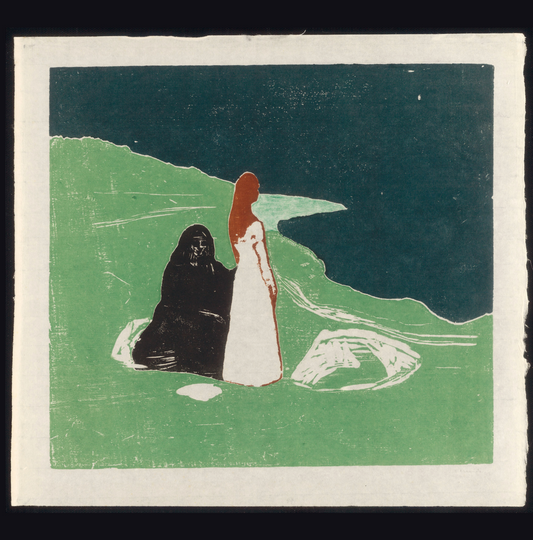Collection: Edvard Munch
Nature is not only all that is visible to the eye... it also includes the inner pictures of the soul.” - Edvard Munch
Edvard Munch (12 December 1863 – 23 January 1944) was a Norwegian painter.
His childhood was overshadowed by illness, bereavement and the dread of inheriting a mental condition that ran in the family. Studying at the Royal School of Art and Design in Kristiania (today's Oslo), Munch began to live a bohemian life under the influence of the nihilist Hans Jæger, who urged him to paint his own emotional and psychological state ('soul painting'). From this emerged his distinctive style.
Travel brought new influences and outlets. In Paris, he learned much from Paul Gauguin, Vincent van Gogh and Henri de Toulouse-Lautrec, especially their use of colour. In Berlin, he met the Swedish dramatist August Strindberg, whom he painted, as he embarked on his major canon The Frieze of Life, depicting a series of deeply-felt themes such as love, anxiety, jealousy and betrayal, steeped in atmosphere. - Wikipedia
"In common with Michelangelo and Rembrandt I am more interested in the line, its rise and fall, than in color. ” - Edvard Munch
Many of Munch's works depict life and death scenes, love and terror, and the feeling of loneliness was often a feeling which viewers would note that his work patterns focused on. These emotions were depicted by the contrasting lines, the darker colors, blocks of color, somber tones, and a concise and exaggerated form, which depicted the darker side of the art which he was designing. Munch is often and rightly compared with Van Gogh, who was one of the first artists to paint what the French artist called "the mysterious centers of the mind."
Edvard Munch passed away in 1944, in a small town which was just outside of his home town in Oslo.
- Edvard Munch org
















